Twins of Evil (1971)
Directed by: John Hough
Written by: Tudor Gates
Starring: Damien Thomas, Madelaine Collinson, Mary Collinson, Peter Cushing
UK
AVAILABLE ON BLU-RAY AND DVD
RUNNING TIME: 87 mins
REVIEWED BY: Dr Lenera, Official HCF Critic
Maria and Frieda, recently orphaned identical twin teenage girls, move from Venice to Karnstein in Central Europe to live with their uncle Gustav Weil, a stern puritan and leader of the fanatical witch-hunting ‘Brotherhood’. Resenting her uncle’s sterness, she becomes fascinated by the local Count Karnstein, who has the reputation of being “a wicked man”. He enjoys the Emperor’s favour and thus remains untouched by the Brotherhood. Trying to emulate his evil ancestors, he murders a girl as a human sacrifice, calling forth Countess Mircalla Karnstein from her grave, after which Mircalla turns the Count into a vampire…
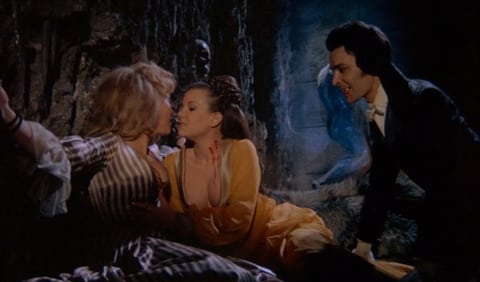
The last, the least sexual but easily the liveliest of Hammer’s loose ‘Karnstein trilogy’ which also consists of The Vampire Lovers and Lust For A Vampire, Twins Of Evil is also the one that’s least connected to the others, and could actually have existed on it own if they’d changed Count Karnstein’s name and removed the one pointless scene with Mircalla. Nevertheless, it’s still another good effort which proves that Hammer were definitely capable of turning out decent work despite diminishing box office receipts. Undoubtedly influenced by the likes of Witchfinder General, it’s a tightly plotted tragedy with some strong characters that would have probably worked just as well without the vampire part of the plot, and its sometimes quite intelligent script doesn’t at all seem like the work of the same guy who’d just written such a weak script for Lust For A Vampire, yet out of all the ’70’s Hammers aside from perhaps Scars Of Dracula this is the one that makes the most attempt to look and feel like a Hammer product from the “classic” period, and it does succeed in pulling this off some of the time despite a typically low ’70’s budget. It also has possibly one of the best performances Peter Cushing ever gave in a Hammer film. For a start, he’s terrifying!
It was originally intended to be called Village Of The Vampires, then The Vampire Virgins and was to star Cushing as the vengeful Count Karnstein spreading terror with Carmilla throughout a village. This script was rejected, possibly due to the commercial failure of Lust For A Vampire, but then producer Harry Fine saw a Playboy spread involving the Collinson Twins, so screenwriter Tudor Gates reworked his treatment, all but removed Mircalla from the story, and added a character who was perhaps even more of a villain than Karnstein, that of cruel witchfinder Gustav Weil. Supported by Rank, Hammer decided to have John Hough, a relative newcomer, direct. He got the job when he wrote an article saying “What was wrong with horror films and how it should be put right”. He filled the cast list with alumni from his TV series pilot Wolfshead: The Legend Of Robin Hood, though of course most of the publicity concerned the twins. Ingrid Pitt was offered the walk-on part of Mircalla but refused. Shot at Pinewood and Black Park [hurray, it’s been a while since we’ve seen it!], Twins Of Evil, released in the UK on a double bill above Hands Of The Ripper, did fair business but didn’t really halt Hammer’s declining fortunes. The BBFC only requested two minor trims – to Gerta lying on Count Karnstein and blood being smeared onto a woman’s body. However, in the US, despite distributors CIC being very impressed with the film, three minutes were cut at the behest of the MPAA, removing most of the sex and gore, despite the many other violent and sexual films that came out in 1971. A short scene in which the vampiric Frieda approaches her uncle was also cut from the American print as it disrupted continuity and is missing from most versions now though has been shown on TV.
Twins Of Evil begins with the Brotherhood dragging a woman out of her home and burning her as a witch, and this happens several times later too. The vile Weil and his group are little more than murderous thugs despite their religious conviction, continually targeting young women who live alone or who may be fornicating. Meanwhile Karnstein is bored with the fake ‘entertainment’ that his poor servant Dietrich [Dennis Price in another funny little part] provides for him, but never mind, he has powers of black magic himself and stabs a woman so her blood flows onto Mircalla’s remains and she comes to life and vampirises him. Out of all the effective, creepy shots of the shrouded, hooded form gliding about that you get in these films, this one is the best. Unfortunately, Mircalla is not in the film after this, and I really think it was pointless putting her in. I assumed from the other films that Count Karnstein was a vampire anyway, you’re certainly led to believe that, so they could have totally done away with the Mircalla scene altogether. Anyway, the twins have now arrived at the village and teacher Anton immediately takes a shine to Maria, but Frieda is fascinated by Karnstein and goes to his castle where we have a mild sex scene where one of Frieda’s hands amusingly caresses a candle during the act. He vampirises her, and once again the ‘rules’ of vampirism are changed so that one can now be bitten just once and become a vampire straight away with no bite scars on the neck. Frieda then goes for a local ‘uneducated’ village girl he’s chained up, and bites her on the breast in the only suggestion of the lesbianism which had been a bigger part of the first two films. She’s soon sneaking off to bite others while her poor sister has to pretend to be her and bears the brunt of their uncle’s whip.
There’s a lot of vampire biting, though the act is mainly off screen, and you just know that the idea of one twin often being mistaken for the other is going to climax with Karnstein arranging that the Brotherhood mistakenly try to burn Maria at the stake rather than the evil, vampiric Frieda. It all gathers pace quite well and builds up to a final reel which, while similar to that of Lust For A Vampire with its marching on Castle Karnstein, probably contains more action than the first two Karnstein films put together. What with a machete in the face, a torch in the eyes, an axe in the back, a stake through the heart and a decapitation that’s reasonably convincing for once, you really get your money’s worth in terms of gore and brutality and, while the staging of the climactic action is somewhat rushed and clumsy – particularly the face off between arch enemies Weil and Karnstein which surely deserves more than a tiny scuffle and then an axe in the back – there’s just a slight sense of tragedy because the film has made some attempt to build up its characters and their relationships. And we get the explanation for why fire can’t harm vampires – their souls will inhabit other bodies. Of course the large dumb black servant of Karnstein would have the PC mob reaching for their guns if the film were made now.
It’s fair to say that the aspect of the story concerning Weil and the Brotherhood is probably more interesting than the vampire stuff, and the pitting of repression against libertarianism takes a common Hammer subject and runs with it, yet refuses to take sides, while both sides seem to suppress the female of the species. Karnstein might be a degenerate who murders and practices black magic, but at least he tries to enjoy himself, unlike the Brotherhood who take puritanism to absurd extremes. Weil is misguided and cruel and not only accepts the vote of the other Brotherhood members to burn one of his nieces but even picks up the first torch, yet he certainly practises what he preaches and genuinely believes he is doing the right thing. “I’ve always tried to be a good man” he says wearily to his wife during one effective little moment. I once read a review that said Weil gets sexual kicks from burning pretty young woman, but I don’t see this myself. Instead, he just seems to have ridiculously high moral standards, hates the idea of sex and thinks that women are the source of all sin, while his humanity has been stripped away by his obsessive desire to purge the world of witches. Cushing superb in his coldest, harshest characterisation for Hammer. This was his first role after the death of his wife Helen two months before, and this traumatic event seemed to even change his appearance, giving him a very gaunt look. Compare how he looks here to how he appears in The Vampire Lovers just a year before, and the difference is striking, not to mention extremely sad. He threw himself into his work for the rest of the decade, averaging five or six films a year and not always bothering about quality, though he still gave every role his all, at least from the ones I’ve seen [which, being a fan, is most of them!].
Hough provides a few stylish quirks like faces looming at the camera and some ‘shakycam’, and cinematographer Dick Bush saturates the film in blues and greens. He can’t conceal the cheapness of most of the sets, but there is a wonderful overgrown fog-strewn graveyard in the best Gothic fashion. And Damien Thomas as Karnstein has a certain magnetism and does quite well in a part which gives the impression that it was written with Ralph Bates in mind. The Collinson twins aren’t the best performers, it must be said. Madelaine [who’s the only one of the two to show her assets] is perhaps slightly better than Mary, though Mary was probably playing the harder role, the character being so good and honest and virtuous that you just want to slap her when she lets her sister control her and cause her harm. David Warbeck, a minor cult figure best known for The Beyond, is an agreeable young ‘hero’ and I’ve often wondered why he never really made it big. Harry Robinson returns to do the musical score and it’s the most conventional of his Hammer scores, mostly the usual blood and thunder, though it’s the perhaps rather too jaunty theme for the Brotherhood that you’ll probably remember. There’s effective scoring of the sex scene 20 or so minutes in and a much longer use of a brief swirling motif from The Vampire Lovers for the lengthy climax. Really pretty good for the most part if not quite reaching the quality of the films it recalls, Twins Of Evil is a good bet for a newcomer to these films who doesn’t yet feel ready to watch something as old as 1960 or earlier, yet who wants to get a general feel of what Hammer Horror is like.

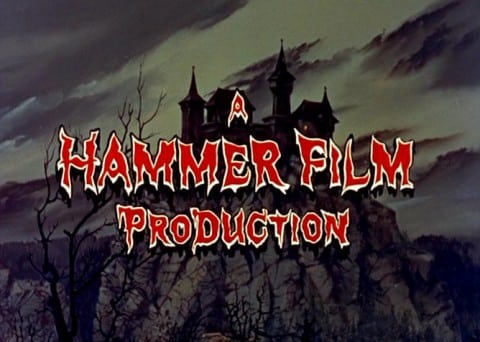
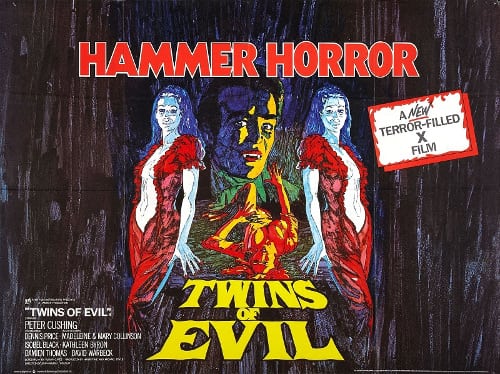
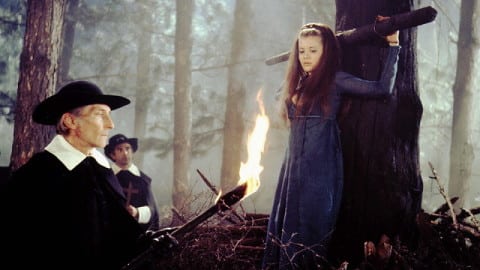




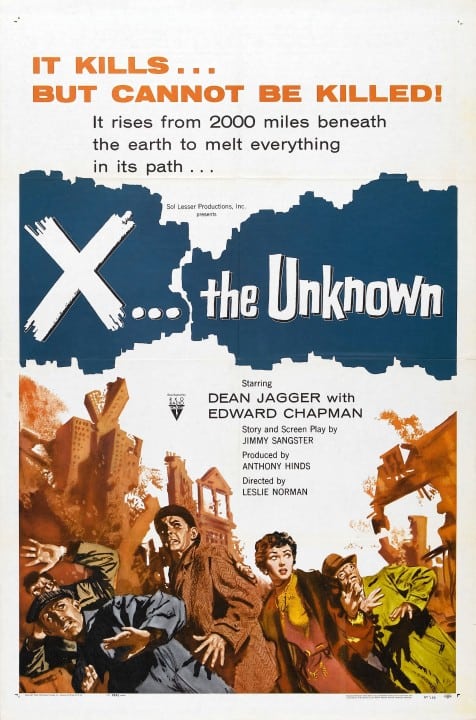


Be the first to comment